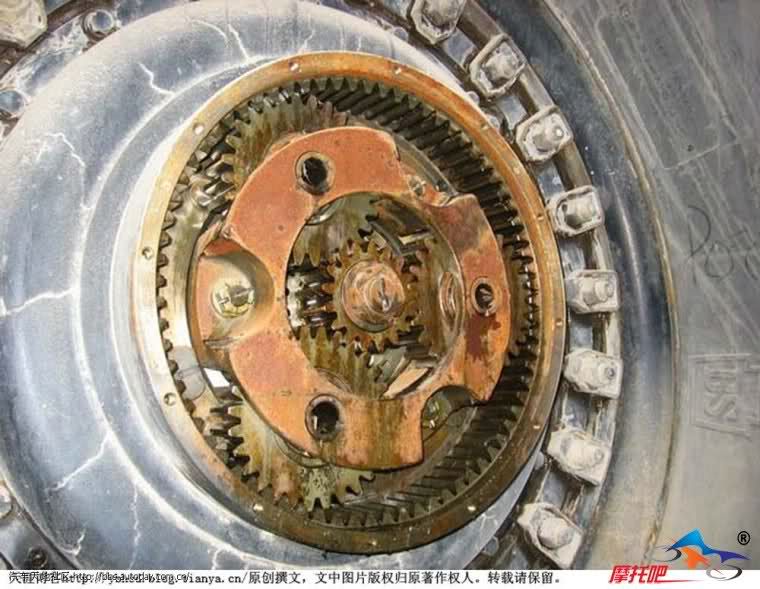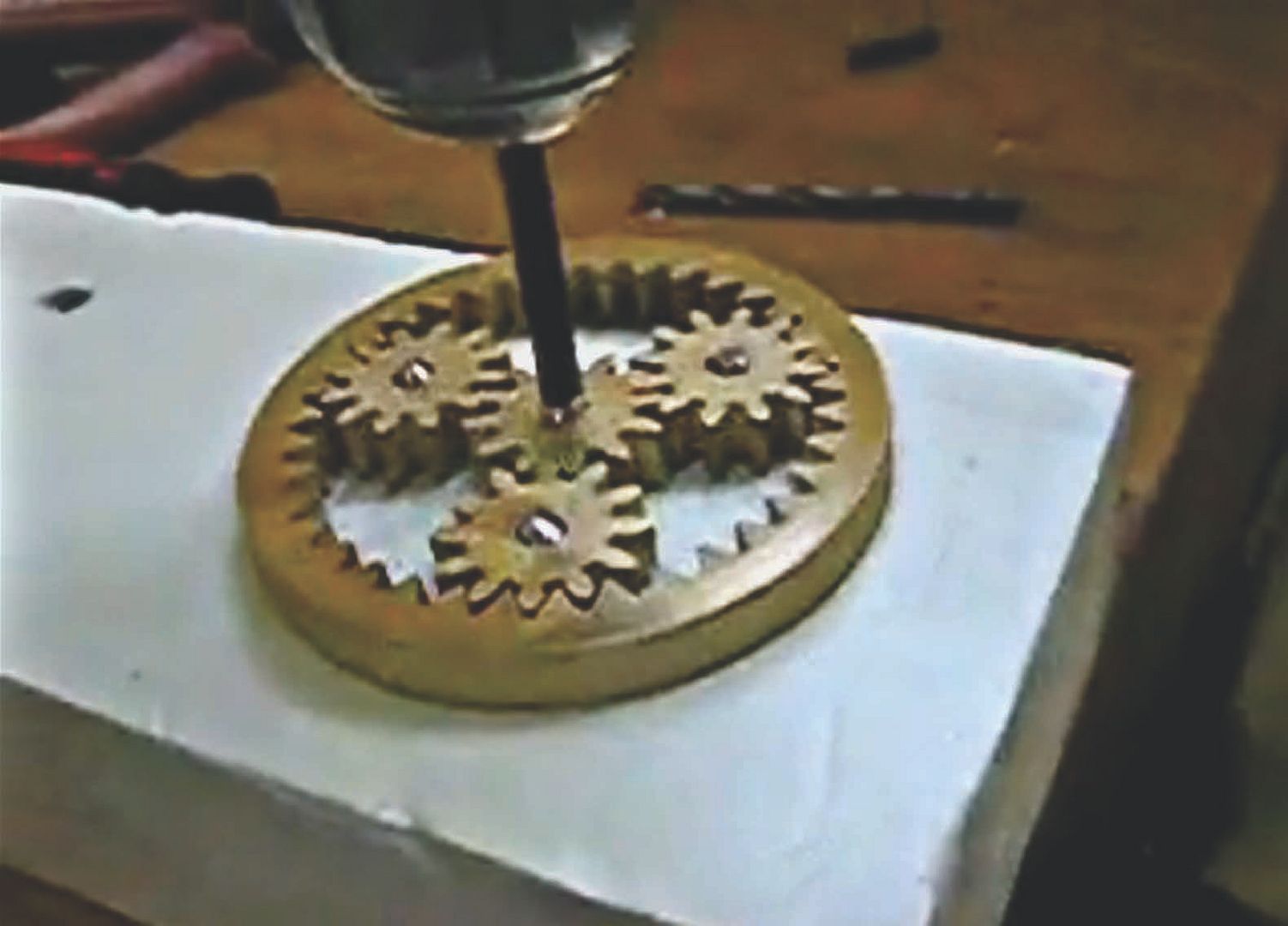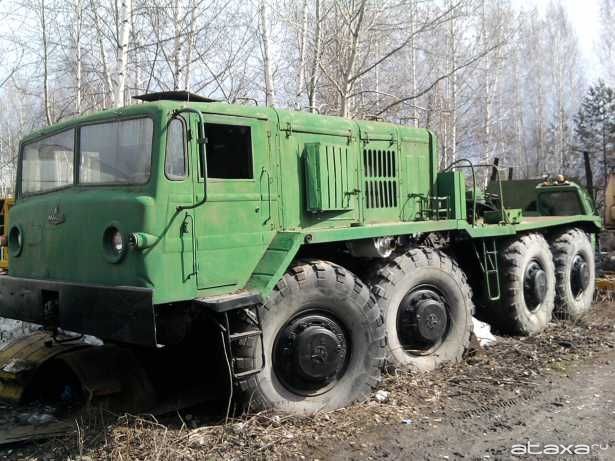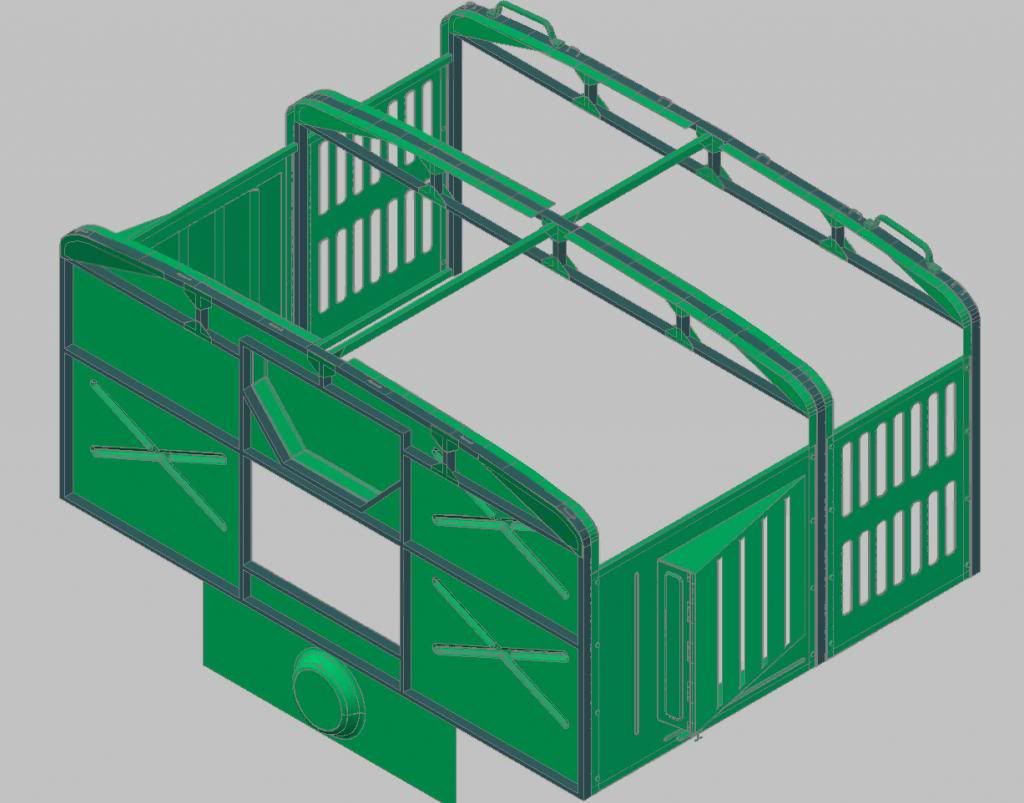Tonight's efforts focused on building the load box walls and tailgate.
Also I modified a third wheel/tire combo with the new larger drive hub - five more to go!
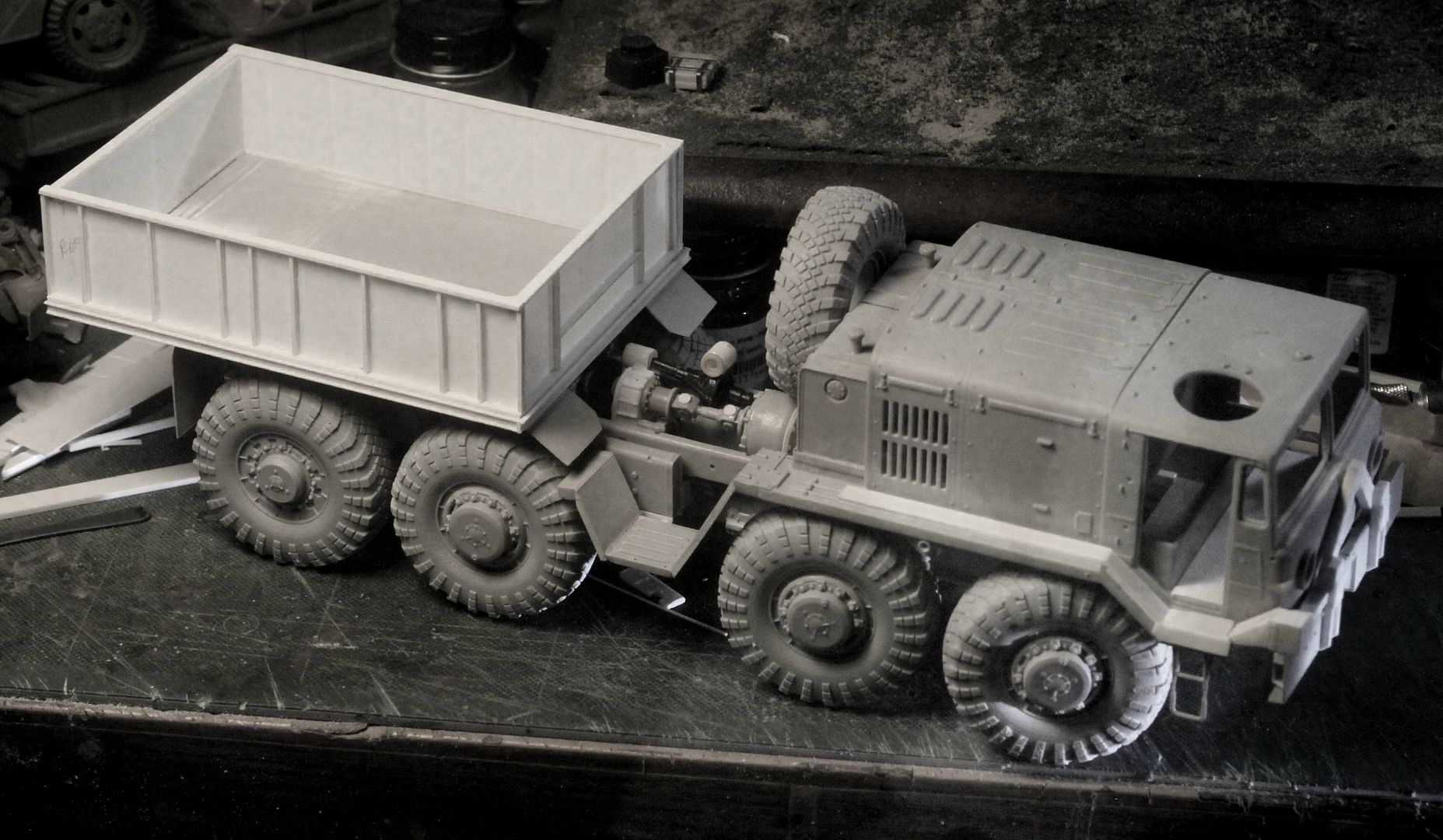
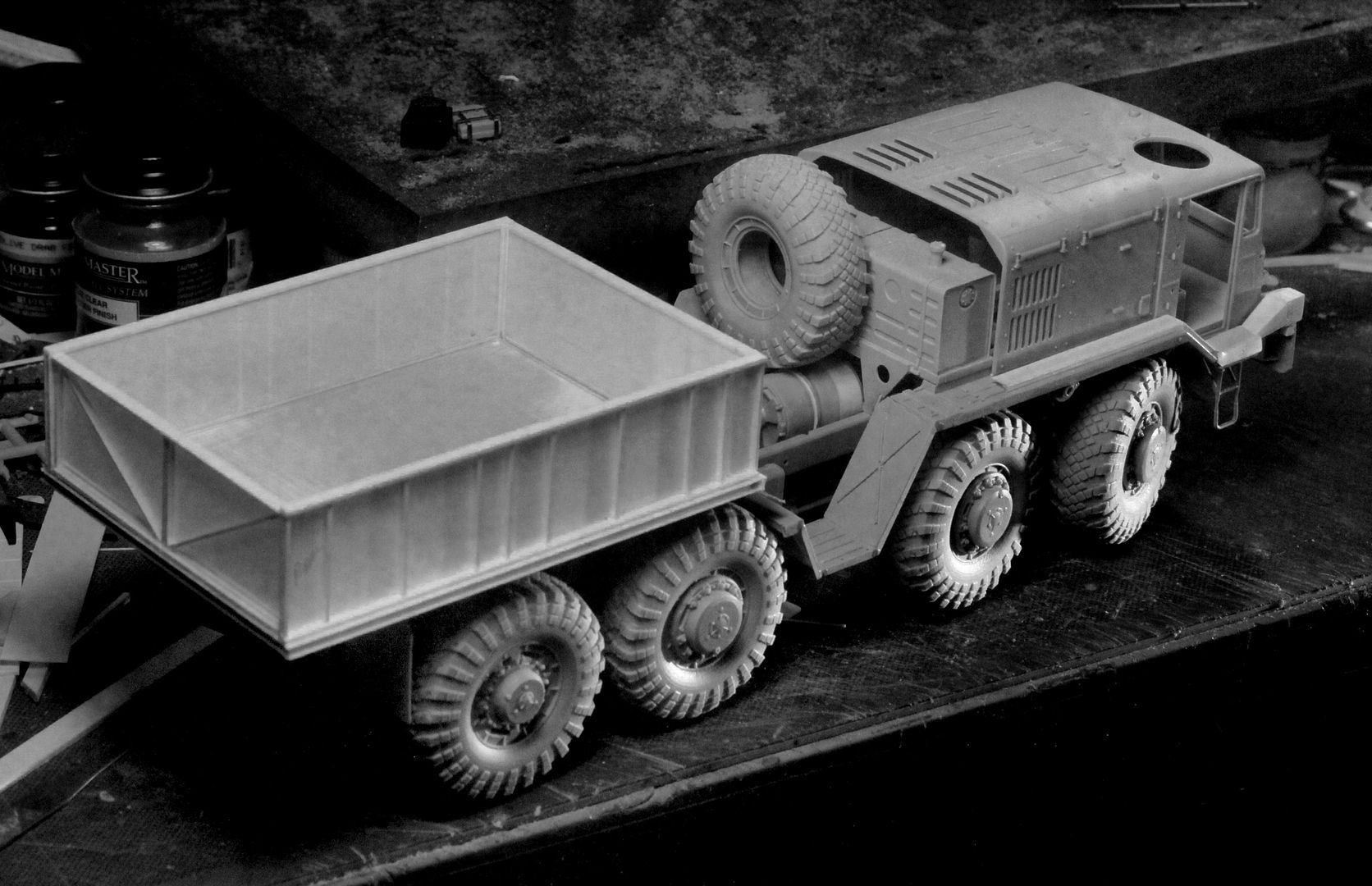
As you can see above three wheel hubs replaced and five yet to go.

Would that I could step up and view what is in that load box!
We can see some storage lockers in the front of the box. Also a standard loading jib crane is stowed further back.
AND Two more items I can only suspect;
#1. I expect that the unusual length (and extreme overhang) of the load box is governed by the need to be able to carry the stinger probe when not is use. (As when returning from the silo back to the assembly plant, awaiting the next missile assignment). So there is probably some sort of cradle fixture required to store the stinger when not in use that runs down the center of the load box.
#2. This vehicle is clearly a ballast tractor, just like the MAZ airport tug or the M19 Diamond T ballast tractor. This vehicle would therefore require some sort of dead weight load to increase the tractive effort of the rear two axles. I therefore suspect there to be either four or six very large cast metal dead weights carried in this load box just as there is in the airport tug.
Any further thoughts anyone might offer on this subject would be greatly appricated.




 [/URL
[/URL